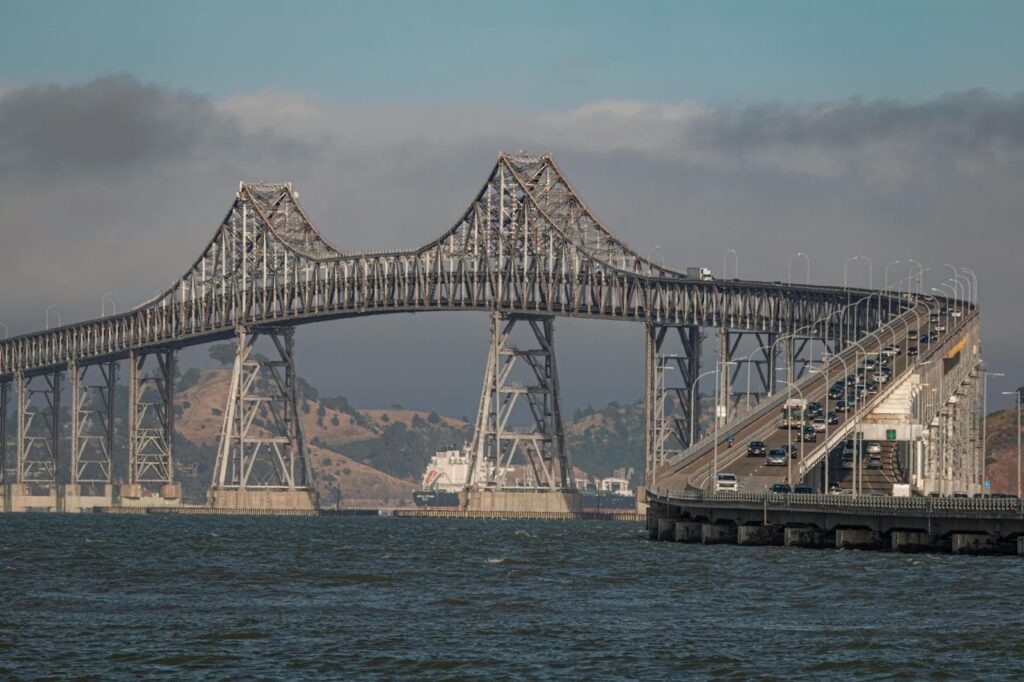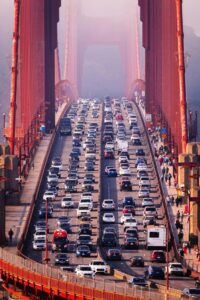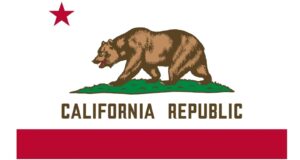
Alerting All Bay Area Cyclists: Weekday Access Limited on Richmond–San Rafael Bridge Path
The Richmond–San Rafael Bridge bike and pedestrian path opened in 2019 as a major step toward a more connected, bike-friendly Bay Area. Less than six years later, that access is being restricted to help relieve rising car congestion on I-580.
Below are the updated access hours, shuttle options, and what this change means for cyclists. As A Lawyer for Bike People, I want riders to understand both the policy shift and their rights.
Bike Path Open on Weekends and Off-Peak Hours Only
Beginning October 27, 2025, the Richmond–San Rafael Bridge bike path will close during weekday commute hours to make space for a third westbound vehicle lane.
Bike Path Schedule (Starting October 27)
Closed: Sunday 11:00 p.m. → Thursday 2:00 p.m.
Open: Thursday afternoon → Sunday night
This schedule significantly reduces weekday access for commuters who rely on the bridge as part of the Bay Trail network.
Free Weekday Bike Shuttle
To offset the closure, a free shuttle will run on weekdays and carry both riders and bicycles.
Shuttle Locations:
• Point Richmond – Tewksbury Avenue bus stop
• Point San Quentin
Capacity: 10 passengers + bikes
Trip Duration: ~20 minutes
Hours:
• Monday–Wednesday: 6:00 a.m. – 8:00 p.m.
• Thursday: 6:00 a.m. – 2:00 p.m.
While helpful, many advocates argue the shuttle does not replace safe, direct, protected bike access.
Why Access Is Being Limited
The bridge path opened as a four-year pilot project to study bike and pedestrian usage. As post-pandemic traffic returned, westbound I-580 congestion again increased during morning and evening commutes.
Officials — especially those from Marin County — highlighted that weekday usage averaged 136 cyclists per day, and argued this level of use didn’t justify dedicating a full lane to bikes during peak vehicle demand.
Their position: weekday bike access wasn’t easing traffic enough to justify the tradeoff.
Who Voted for the Change
In August 2025, the BCDC voted 15–2–1 to approve restricted weekday access. “Yes” votes included representatives from:
• Caltrans
• Metropolitan Transportation Commission (MTC)
• Marin County
• Several state-appointed commissioners
Their reasoning included:
Traffic congestion relief: Opening a third lane is expected to reduce weekday backups.
Data-driven decision: Commissioners called weekday bike usage “underutilization.”
Compromise approach: Weekend and recreational access is preserved.
Equity investment: MTC committed $10 million toward Bay Area bike infrastructure to show continued support for active transportation.
What Bike Advocates Are Saying
Organizations including Marin County Bicycle Coalition, Bike East Bay, and Rich City Rides strongly opposed the change.
Opponents argue the closure:
Undermines safety and accessibility
Cyclists must rely on shuttles or detours, increasing exposure to traffic hazards.
Breaks public trust
The lane was widely viewed as a permanent Bay Trail segment.
Sets a precedent
It raises concerns that bike infrastructure may be rolled back anytime car congestion increases.
Excludes low-income and car-free riders
Those most dependent on weekday bike access will be disproportionately affected.
Learn more at Bike East Bay’s Save the RSR Trail page.
Liability and Legal Rights for Cyclists Injured on the Bridge Path
Because the Richmond–San Rafael Bridge Path is owned and maintained by Caltrans, injuries here fall under California’s Government Claims Act (Gov. Code §810 et seq.).
Government entities have strong protections — known as sovereign immunity — but they can still be held liable if certain conditions are met.
To bring a claim, you generally must show:
-
A dangerous condition of public property caused the injury,
-
The agency knew or should have known about the hazard, and
-
The agency failed to repair, warn, or correct the issue.
Before any lawsuit, injured cyclists must file a government claim within six months. Only after the claim is denied or ignored for 45 days can a lawsuit proceed.
Because these deadlines are strict and the evidence standard is high, riders should document hazards immediately and consult an attorney experienced in government liability and bicycle law.
How to Report Hazards or Unsafe Conditions
Cyclists can help improve safety by reporting issues directly:
• Caltrans District 4: Submit a Maintenance Service Request
• MTC: Contact the Metropolitan Transportation Commission
• Bike East Bay: Report a Hazard (via SeeClickFix)
Include photos, a precise location, and a clear description such as “loose barrier segment halfway across the bridge” or “standing water on incline.”
If You’re Injured While Cycling, Contact Paceline Law
In a paceline, cyclists reduce wind drag by up to 50% by riding together. Working with an attorney should feel the same — less resistance, more progress.
If you’ve been injured on the Richmond–San Rafael Bridge or anywhere in the Bay Area, I’m here to advocate for you as A Lawyer for Bike People. Let’s move forward together.



